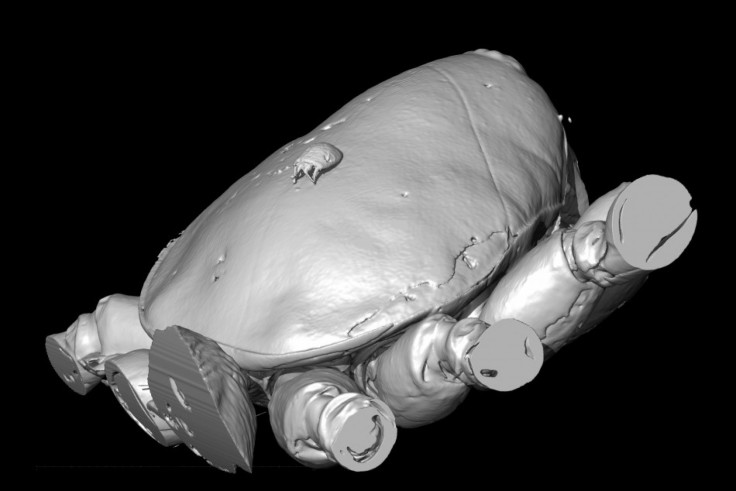Fifty-Million-Year-Old Hitchhiker Found

Scientists discovered a prehistoric mite clinging to the back of an ancient spider -- and say it could teach humans a thing or two about hitchhiking.
Scientists from the University of Manchester and Berlin's Humboldt University used X-ray scans to get three-dimensional images of the microsopic arthropod caught in amber riding a 50 million-year-old spider.
The research indicates that hitchhiking may have originated before the rise of modern animals at least 50 million years ago, the team said.
Such behavior is common in several different groups today, Manchester biologist Richard Preziosi said in a statement. The study of fossils such as the one we described can provide important clues as to how far back in geological time such behaviors evolved.
The journal Biology Letters published the study Tuesday, and scientists said that advanced imaging technology from computed tomography scans was the key to tracking the microscopic rider.
Fossil mites are especially rare and the particular group to which this remarkable new amber specimen belongs has only been found a handful of times in the fossil record, study co-author Jason Dunlop of Humboldt University said in a statement. Yet thanks to these new techniques, we could identify numerous important features as if we were looking at a modern animal under the scanning electron microscope.
Scientists also said the scanning technology could help future studies. Doctors use CT scans to view structures inside patients' bodies. Co-author David Penney told IB Times in an email that this study pushed the boundaries of what we can do with CT scanning of amber inclusions.
Mites aren't the only species known to hitchhike, researchers said.
In the amber fossil record the most commonly encountered hitch hikers are pseudoscorpions attached to the legs of flies or beetles, but these specimens are rather rare, Penney wrote to IB Times in an email. This year a remarkable specimen was described which consisted of a mantispid (mantis fly - looks like a praying mantis but it is different) larva hitching a ride on the back of a spider. These larvae feed on spider eggs...and what better way to find such a food source than to sit on the back of spider [until] it lays some.
© Copyright IBTimes 2024. All rights reserved.





















